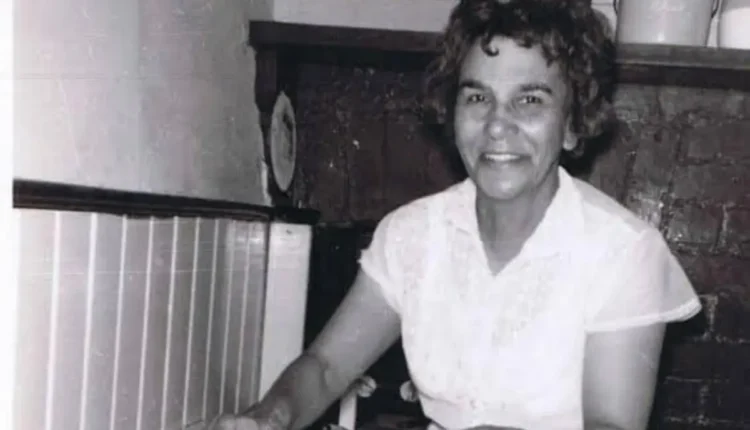Gladys Nicholls, an Aboriginal activist and beloved community leader, lived a life marked by resilience, determination, and an unwavering commitment to the well-being of others. Gladys Naby Muriel Nicholls devoted her life to empowering Melbourne’s urban Aboriginal community, working tirelessly from the 1940s to the 1970s to create a supportive network for Indigenous people throughout Australia. Through her enduring legacy, Gladys Nicholls continues to inspire those striving for equality and justice today.
Early Life and Heritage of Gladys Naby Muriel Nicholls
Born on October 21, 1906, on the Cummeragunja Reserve near Moama, Gladys was a beacon of strength from an early age. Her unique heritage as a Yorta Yorta, Djadjawurrung, and Baraparapa woman on her mother’s side, and Punjabi Indian on her father’s side, gave her a deep appreciation for both Indigenous culture and the importance of diversity.
Her father, Meera Bux, was a Punjabi merchant who ran a general store on the Victorian side of the Murray River. Gladys grew up in an environment that fostered resilience, self-sufficiency, and a strong sense of community.
From a young age, Gladys Naby Muriel Nicholls worked in her father’s store and later as a dairy maid. These early experiences not only taught her the value of hard work but also laid the foundation for her future role as a leader and advocate.
Life, Loss, and New Beginnings
At 19, Gladys Naby Muriel Nicholls married Herbert “Dowie” Nicholls, a fellow Cummeragunja resident. The couple had three children and joined a mass walk-off from the reserve in 1939, protesting its poor conditions. Seeking new opportunities, they moved to Melbourne, where Gladys worked in a munitions factory during World War II. Tragically, in 1942, her husband was struck by a car and succumbed to his injuries, leaving Gladys a young widow with three children.
In a turn of fate, Herbert’s younger brother, Douglas Nicholls—a pastor and activist—offered Gladys Naby Muriel Nicholls support during this difficult period. Later that year, Gladys Naby Muriel Nicholls married Douglas, and they began a life marked by partnership in advocacy, faith, and service.
Building a Community and Empowering the Youth
The post-war years saw Gladys Nicholls become deeply involved in Melbourne’s urban Aboriginal community, which was plagued by poverty and discrimination. Recognizing the need for change, Gladys took action. She organized Sunday schools, established opportunity shops, and engaged in relentless fundraising efforts to support the community.
One of her most significant achievements was the establishment of a hostel for Aboriginal girls in Northcote in 1956. Originally named “Cummeragunja,” the hostel provided a safe haven for young women seeking work in the city. Later renamed the Lady Gladys Nicholls Hostel in her honor, it became a beacon of hope for many young Aboriginal women who needed support and guidance. Inspired by this success, Gladys helped create a similar hostel for Aboriginal boys.
Leadership and Advocacy: The Aborigines Advancement League
In 1957, Gladys co-founded the Women’s Auxiliary of the Aborigines Advancement League (AAL), an organization committed to improving the rights and lives of Indigenous Australians. She traveled throughout Victoria, recruiting members and galvanizing support for the movement.
Through the AAL, Gladys Naby Muriel Nicholls led efforts to provide essential services such as school supplies, hospital visits, and reintegration support for ex-prisoners. Gladys organized annual Christmas events for underprivileged children, fostering a sense of belonging and joy.
As part of her activism, Gladys Naby Muriel Nicholls campaigned for the 1967 referendum, which successfully amended Australia’s Constitution to include Indigenous Australians in the national Census and allowed the federal government to make laws for Indigenous people. This pivotal moment in Australian history marked a step towards greater equality and recognition for Indigenous Australians. Gladys Nicholls stood at the forefront of this movement, tirelessly advocating for a more just society.
A National Voice for Indigenous Rights
Throughout the 1960s and 1970s, Gladys Nicholls expanded her advocacy efforts beyond Victoria. She became involved with national organizations, including the Federal Council for the Advancement of Aboriginal and Torres Strait Islanders (FCAATSI) and the National Aboriginal and Islander Women’s Council, where she held leadership positions. Through these platforms, she worked to raise awareness about Indigenous rights and amplify the voices of Indigenous Australians on a national scale.
Even as her husband, Pastor Doug Nicholls, was knighted and later appointed Governor of South Australia, Gladys Naby Muriel Nicholls remained dedicated to their shared mission. Gladys Naby Muriel Nicholls used her position to advocate for Aboriginal rights and continued her work with the same passion and humility that defined her life.
Legacy of Lady Gladys Nicholls
Lady Gladys Nicholls passed away on January 28, 1981, leaving behind a profound legacy. Her enduring impact is a testament to her strength, compassion, and commitment to social justice. In 2008, she was posthumously inducted into the Victorian Honour Roll of Women, a fitting tribute to a woman who dedicated her life to serving her community.
Also Read:Trevor John Khan: Advocate for Equality and Dignity in Australian Law

